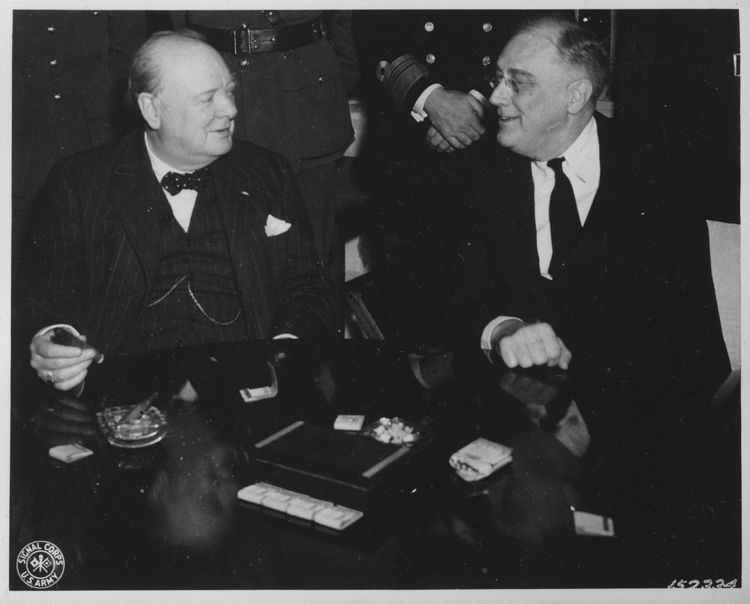 | ||
The Allied leaders of World War II listed below comprise the important political and military figures who fought for or supported the Allies during World War II. Engaged in total war, they had to adapt to new types of modern warfare, on the military, psychological and economic fronts.
Contents
- Free Albania
- Belgium
- Brazil 19421945
- British Empire and Commonwealth
- Australia
- Canada
- India
- New Zealand
- Union of South Africa
- United Kingdom of Great Britain and Northern Ireland
- British Malaya
- Newfoundland
- British Mandate for Palestine
- Southern Rhodesia
- Republic of China
- Free Czechoslovak Republic
- Kingdom of Denmark 19401945
- Kingdom of Egypt
- Empire of Ethiopia
- French Third Republic Until 1940
- Free French Forces and later Fighting France and Provisional government of the French Republic
- Kingdom of Greece 19401945
- Imperial State of Iran after Anglo Soviet Invasion
- Provisional Government of the Republic of Korea
- Republic of Liberia
- Grand Duchy of Luxembourg
- United Mexican States
- Mongolian Peoples Republic
- Kingdom of the Netherlands 19401945
- Kingdom of Norway
- Second Polish Republic
- Polish Government in Exile and Secret State
- Soviet Union 19411945
- United States of America 19411945
- European and North African Front
- Pacific Front
- Puerto Rico
- Commonwealth of the Philippines
- Kingdom of Yugoslavia
- References
Free Albania
Belgium
Brazil (1942–1945)
British Empire and Commonwealth
Australia
Canada
India
New Zealand
Union of South Africa
United Kingdom of Great Britain and Northern Ireland
British Malaya
Newfoundland
British Mandate for Palestine
Southern Rhodesia
Republic of China
Free Czechoslovak Republic
Kingdom of Denmark (1940–1945)
Kingdom of Egypt
Empire of Ethiopia
French Third Republic (Until 1940)
Free French Forces (and later Fighting France and Provisional government of the French Republic)
Kingdom of Greece (1940–1945)
Imperial State of Iran (after Anglo-Soviet Invasion)
Provisional Government of the Republic of Korea
Republic of Liberia
Grand Duchy of Luxembourg
United Mexican States
Mongolian People's Republic
Kingdom of the Netherlands (1940–1945)
Kingdom of Norway
Second Polish Republic
Polish Government in Exile and Secret State
Soviet Union (1941–1945)
United States of America (1941–1945)
European and North African Front
Pacific Front
Puerto Rico
Commonwealth of the Philippines
Kingdom of Yugoslavia
References
Allied leaders of World War II Wikipedia(Text) CC BY-SA
